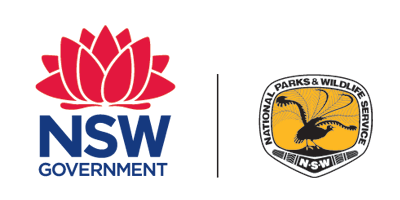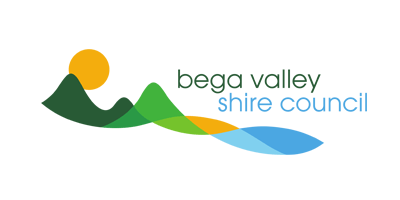cultural heritage & history
Wharf to Wharf Walk crosses the ancient lands of the Yuin people, traditional custodians of the ancient land and sea country along which the walk follows. Natural landscapes provided sustenance, shelter and cultural importance, and the significance of these sites remain today. European settlement in the 1800s marked the commencement of activity such as farming, logging and steam navigation, with evidence of these activities found along the walk.
history of the shire - our traditional owners
The Traditional owners of the Bega Valley Shire are the communities of the Yuin-Monaro Nations. From ancient times they have been the inhabitants and custodians of the land, sea and waterways. The cultural geography of the south coast is in the following terms, reverting to the coastal clans are the Murring, or especially the Yuin clans. These claimed responsibility of country from Cape Howe to the Shoalhaven River in NSW. They formed two large sub-groups or sub divisions, called respectively Guyangal and Kurial, from the words guya, south and kuru, north, gal being the possessive postfix. The inland extent of their country included the fall from the coast range to the sea.
Evidence is limited but the tabulation of marriages makes it quite clear that the far south coast formed a distinct region marked by the intensity of intermarriage while demonstrated that there were, nevertheless, links with Gippsland and the Monaroo prior to colonisation as would be expected, since few if any groups lived completely isolated from their neighbours.
The Tadjera-Munji-Djiringanj (from Cape Dromedary south to beyond Bega, inland to the sharp scarp of the Dividing Range east of Nimmitabel), Thaua (north of Merimbula south to Green Cape and west to the scarp of the Dividing Range), Bidawahal (just south of Green Cape) and Nulliker (Twofold Bay), Monaroo (on the escarpment country) groups comprised the Yuin-Monaro Nations in the area now known as the Bega Valley Shire. This was the case for many thousands of years.
The groups of the Yuin communities living in coastal areas are known as (Katungal from the work Katung) sea coast people and the Baianbal or Paienbara (the tomahawk people) those who lived in the forests. A third group, the Bemerigal or mountain people at Cooma belonged to the Ngarigo people.
Sites throughout the Shire demonstrate occupation by these rich cultures to be in excess of 7,000+ years. These people nurtured an organised and active culture many thousands of years older than the creators of the great pyramids of Giza did or the medieval monuments of Stonehenge did. Some of the oldest physical records of human occupation and activity to be found anywhere in the world are located beneath our noses here in the Bega Valley Shire.
European Settlement
The Bournda district was intensively logged and farmed last century and the current area is largely a regenerating landscape. The first date of non-Aboriginal settlement of the area is not known, but by 1858 produce was being shipped to markets. A Mr Games selected and cleared land in the park at what is now known as Games Bay for dairy farming, probably last century. The area around Bondi Lake was selected by Waterson, probably last century, and was also cleared and worked as a dairy.
At one stage cattle were jumped from ships standing out from Bournda Beach and swum ashore to Waterson's property. During the last century the Bournda area supported two schools, one on the northwestern corner of Wallagoot Lake and one at the northern end of Bondi Lake. Two bays along the Kangarutha coastline, at Kangarutha Point and Kianinny, were locations for storage and shipping of agricultural produce. Anchor bolts are located at Kangarutha Point and it is believed that the existing track to the Point was the one originally used to supply ships anchored there.
In 1859 Surveyor Bransby surveyed a track between Merimbula and Bega along the park coastline, across the mouth of Bournda Lagoon. As Merimbula was a port for Bega, the track was used to transport produce and passengers. Teams camped at `Freshwater Lake' (Bondi Lake). The route of the old road can still be seen between old fence lines and stands of honey myrtle regrowth on the western side of Bondi Lake. Shale oil was extracted by a well on the headland south of Bournda Island from 1914 to 1920. There are several abandoned quarries in the Kangarutha area and on the eastern slope of Bournda Trig.
Sleeper cutters worked the Kangarutha area during the 1920's and 1930's, supplying a significant proportion of the sleepers for the Indian rail system. Later large amounts of firewood were taken from the area for a brick kiln at Kalaru. Logging continued until establishment of Bournda State Recreation Area in 1975.
The conservation and recreation values of the area began to be appreciated and in 1973 the Bega Tathra Conservation Society created the Bournda nature trail within what is now the park and in 1977 the Society constructed a field studies centre (High Ridge Hut).
The only known historically significant feature in the park or reserve is a three room slab hut at Scotts Bay (Scotts Hut). It is of bush post and beam construction with sapling rafters, slab walls, timber floor and iron gable roof. The central room has a large stone fire place with an iron chimney. The hut was constructed in 1890 by Thomas Scott. It was originally one of two buildings and was used as a kitchen, dining and storage area. The hut is architecturally and historically significant as a rare example of a vernacular building associated with the original agricultural settlement of the district.


